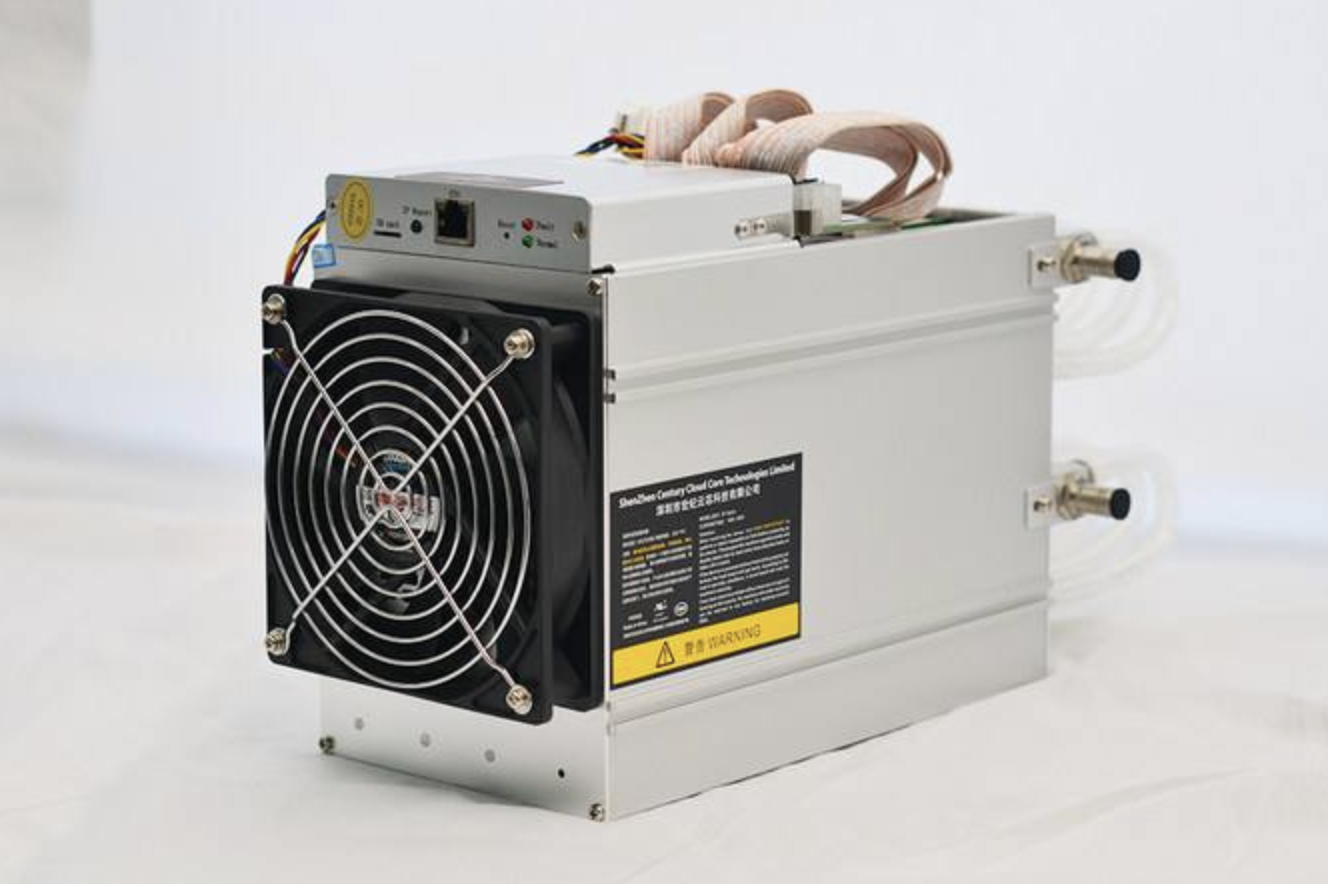China is slowly picking itself up from the covid-19 outbreak and businesses nationwide are also slowly recovering. Yet bitcoin mining, though it initially appeared to be virus-proof, has suffered—and could be in for way more pain.That’s partly because, thanks to quarantines, mining rig manufacturers, such as Beijing-based Bitmain and Shenzhen-based MicroBT, were unable to ship new equipment to mining farms, which are mostly in the northwest of the country (where hydroelectricity is abundant.) Coindesk says that the supply-chain hiccup could have caused BTC’s hash rate to stagnate last month.Unrelated, but also problematic, was the shipping delay of 7-nanometer chips from Taiwan-based manufacturer TSMC. High demand from the likes of Apple and Huawei caused the chip maker to postpone its delivery from 2019 to early 2020. The new chips are denser, more powerful and require less power, and are in high demand among miners.Excuses, excusesChina miners not buying Filecoin's "Coronavirus excuse"Filecoin, which you can think of as the decentralized answer to Dropbox, has delayed yet again its mainnet launch date. The project allows users to buy and sell unused space on their harddrive...NewsCoinsShuyao KongMar 2, 2020The elephant in the waiting roomBut as things return to business-as-usual, miners are facing a bigger elephant that has been lingering in the waiting room: The so-called “矿难 mining catastrophe.” The term refers to a scenario that many believe will cause a massive shutdown of many smaller mining farms in China.If the price of bitcoin stays flat or drops further, mining becomes less profitable, putting unbearable pressure on independent miners and smaller operations. That comes at a time—the “halving,” expected in May 2020—when miners will want to upgrade to those 7-nm chips to handle the more complex and computationally intensive proof of work.This looks like a perfect storm for everyone except the big mining operations. The virus and its consequences caught lots of miners by surprise. Those who didn't upgrade earlier enough are now facing dire consequences. Some observers say that this collective upgrade will result in a mining catastrophe for many farms, which are still recouping capital expenditures from the purchase of their old mining rigs. What’s worse: the new chips on the block also drive up hashrate, making it more energy-consuming for the oldies to mine BTC.Oldie but goldie: AntMiner S9Naturally, some observers say a mining catastrophe can be avoided.“Even if the price drops, miners won’t lose everything,” Dan Li, co-founder of XSJ Mining, a mining farm located in the northwest part of China, told me. He believes that sophisticated miners have recouped their infrastructure costs during the past 3 years, which is the effective lifetime of 16nm chips. So they should be able to afford sunsetting outdated equipment.Li believes that mining is just like any other energy storage business. Though miners are affected by short-term price fluctuation, the experienced ones understand that to be truly profitable, you need to be in it for the long haul.“If you look at most energy projects, they are looking out at a 20 to 30-year horizon. The reason is that, compared to trading tokens, mining gives steady cash flow—as long as the risks are properly mitigated,” Li pointed out.The top crypto news & features in your inbox.Join the Decrypt Debrief for a daily curation of top news, features, guides and more.Likewise, newer financial instruments, such as derivatives from Bitmain and Canaan, protect sophisticated miners from running into a complete disaster. Digital merchant bank DAG Global is offering innovative ways for miners to hedge hashrate fluctuation. (Though the derivatives market for miners is still immature and no one knows whether there’s enough liquidity yet.)The bottom lineSo what are we to make of this?I’m still pessimistic that the little guys will be able to survive. It’s analogous to how the whales control the crypto trading markets, with the smaller retail investors getting played. Similarly, the smaller miners respond to rather than control the market. Their fate is often determined by the electricity price they managed to negotiate. Meanwhile, big mining farms, and machine manufacturers move the market. Bitmain, for instance, not only sells rigs but also mines tokens using its latest machines before pushing them to the market.By the time retail miners enter the field, they might just be fresh leeks waiting to be cut by the big miners.
The elephant in the waiting room
But as things return to business-as-usual, miners are facing a bigger elephant that has been lingering in the waiting room: The so-called “矿难 mining catastrophe.” The term refers to a scenario that many believe will cause a massive shutdown of many smaller mining farms in China.
If the price of bitcoin stays flat or drops further, mining becomes less profitable, putting unbearable pressure on independent miners and smaller operations. That comes at a time—the “halving,” expected in May 2020—when miners will want to upgrade to those 7-nm chips to handle the more complex and computationally intensive proof of work.
This looks like a perfect storm for everyone except the big mining operations. The virus and its consequences caught lots of miners by surprise. Those who didn't upgrade earlier enough are now facing dire consequences. Some observers say that this collective upgrade will result in a mining catastrophe for many farms, which are still recouping capital expenditures from the purchase of their old mining rigs. What’s worse: the new chips on the block also drive up hashrate, making it more energy-consuming for the oldies to mine BTC.
Oldie but goldie: AntMiner S9
Naturally, some observers say a mining catastrophe can be avoided.
“Even if the price drops, miners won’t lose everything,” Dan Li, co-founder of XSJ Mining, a mining farm located in the northwest part of China, told me. He believes that sophisticated miners have recouped their infrastructure costs during the past 3 years, which is the effective lifetime of 16nm chips. So they should be able to afford sunsetting outdated equipment.
Li believes that mining is just like any other energy storage business. Though miners are affected by short-term price fluctuation, the experienced ones understand that to be truly profitable, you need to be in it for the long haul.
“If you look at most energy projects, they are looking out at a 20 to 30-year horizon. The reason is that, compared to trading tokens, mining gives steady cash flow—as long as the risks are properly mitigated,” Li pointed out.
The top crypto news & features in your inbox.
Join the Decrypt Debrief for a daily curation of top news, features, guides and more.
Likewise, newer financial instruments, such as derivatives from Bitmain and Canaan, protect sophisticated miners from running into a complete disaster. Digital merchant bank DAG Global is offering innovative ways for miners to hedge hashrate fluctuation. (Though the derivatives market for miners is still immature and no one knows whether there’s enough liquidity yet.)
The bottom line
So what are we to make of this?
I’m still pessimistic that the little guys will be able to survive. It’s analogous to how the whales control the crypto trading markets, with the smaller retail investors getting played. Similarly, the smaller miners respond to rather than control the market. Their fate is often determined by the electricity price they managed to negotiate. Meanwhile, big mining farms, and machine manufacturers move the market. Bitmain, for instance, not only sells rigs but also mines tokens using its latest machines before pushing them to the market.
By the time retail miners enter the field, they might just be fresh leeks waiting to be cut by the big miners.
China is slowly picking itself up from the covid-19 outbreak and businesses nationwide are also slowly recovering. Yet bitcoin mining, though it initially appeared to be virus-proof, has suffered—and could be in for way more pain.
That’s partly because, thanks to quarantines, mining rig manufacturers, such as Beijing-based Bitmain and Shenzhen-based MicroBT, were unable to ship new equipment to mining farms, which are mostly in the northwest of the country (where hydroelectricity is abundant.) Coindesk says that the supply-chain hiccup could have caused BTC’s hash rate to stagnate last month.
Unrelated, but also problematic, was the shipping delay of 7-nanometer chips from Taiwan-based manufacturer TSMC. High demand from the likes of Apple and Huawei caused the chip maker to postpone its delivery from 2019 to early 2020. The new chips are denser, more powerful and require less power, and are in high demand among miners.
The elephant in the waiting room
But as things return to business-as-usual, miners are facing a bigger elephant that has been lingering in the waiting room: The so-called “矿难 mining catastrophe.” The term refers to a scenario that many believe will cause a massive shutdown of many smaller mining farms in China.
If the price of bitcoin stays flat or drops further, mining becomes less profitable, putting unbearable pressure on independent miners and smaller operations. That comes at a time—the “halving,” expected in May 2020—when miners will want to upgrade to those 7-nm chips to handle the more complex and computationally intensive proof of work.
This looks like a perfect storm for everyone except the big mining operations. The virus and its consequences caught lots of miners by surprise. Those who didn't upgrade earlier enough are now facing dire consequences. Some observers say that this collective upgrade will result in a mining catastrophe for many farms, which are still recouping capital expenditures from the purchase of their old mining rigs. What’s worse: the new chips on the block also drive up hashrate, making it more energy-consuming for the oldies to mine BTC.
Oldie but goldie: AntMiner S9
Naturally, some observers say a mining catastrophe can be avoided.
“Even if the price drops, miners won’t lose everything,” Dan Li, co-founder of XSJ Mining, a mining farm located in the northwest part of China, told me. He believes that sophisticated miners have recouped their infrastructure costs during the past 3 years, which is the effective lifetime of 16nm chips. So they should be able to afford sunsetting outdated equipment.
Li believes that mining is just like any other energy storage business. Though miners are affected by short-term price fluctuation, the experienced ones understand that to be truly profitable, you need to be in it for the long haul.
“If you look at most energy projects, they are looking out at a 20 to 30-year horizon. The reason is that, compared to trading tokens, mining gives steady cash flow—as long as the risks are properly mitigated,” Li pointed out.
The top crypto news & features in your inbox.
Join the Decrypt Debrief for a daily curation of top news, features, guides and more.
Likewise, newer financial instruments, such as derivatives from Bitmain and Canaan, protect sophisticated miners from running into a complete disaster. Digital merchant bank DAG Global is offering innovative ways for miners to hedge hashrate fluctuation. (Though the derivatives market for miners is still immature and no one knows whether there’s enough liquidity yet.)
The bottom line
So what are we to make of this?
I’m still pessimistic that the little guys will be able to survive. It’s analogous to how the whales control the crypto trading markets, with the smaller retail investors getting played. Similarly, the smaller miners respond to rather than control the market. Their fate is often determined by the electricity price they managed to negotiate. Meanwhile, big mining farms, and machine manufacturers move the market. Bitmain, for instance, not only sells rigs but also mines tokens using its latest machines before pushing them to the market.
By the time retail miners enter the field, they might just be fresh leeks waiting to be cut by the big miners.
- Forums
- CFDs
- Bitcoin
China is slowly picking itself up from the covid-19 outbreak and...
Featured News
Featured News
The Watchlist
P.HOTC
HotCopper
Frazer Bourchier, Director, President and CEO
Frazer Bourchier
Director, President and CEO
SPONSORED BY The Market Online











